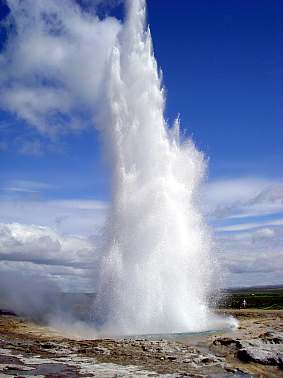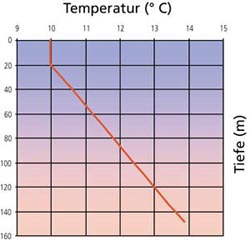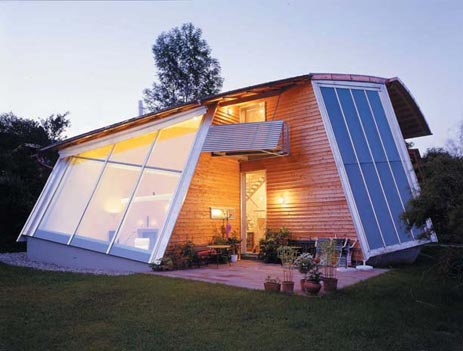- Start / Language
- HHO powered Powerplant
- HHO Systems in Cars
- Geothermal Energy
- Geotherm in Romania
- Partner and Links
- Sponsoring
Introduction, Definitions
Terrestrial-heat offers a natural longtherm Usage, independent of climate, daytime and season for heat- and electricity-Production. Different temperatures and depths gives a huge amount of possibilities for its usage.
 Terrestrial
energy is the warmth, stored underneath the Earth surface. The warmth
originates from the decay of natural Rodioisotope in the rock of the
earth's crust as well as from the heat exchange with the deeper interior
of the earth. The use of the terrestrial heat is called Geotherm.
Terrestrial
energy is the warmth, stored underneath the Earth surface. The warmth
originates from the decay of natural Rodioisotope in the rock of the
earth's crust as well as from the heat exchange with the deeper interior
of the earth. The use of the terrestrial heat is called Geotherm.
In most regions of the earth the temperature in a Depth of 500 m is about 25-30° C and in 1000 m Depth already about 35-45° C. There are also regions, in which under appropriate geological conditions (thinned earth's crust, volcanism, convection of fluids) in this depth temperatures of 100° C, 200° C or even more can be achieved!
Terrestrial heat is an almost inexhaustible energy source. Due to this fact the Geotherm gained a strongly significance in the past years and is an extraordinary hope for the future power supply. The value of the Geotherm in relation to future energy policy scenarios increases clearly.
Advantages of the Terrestrial Energy
Geotherm is a emission-free and locally usable energy source. By its dual function as a source and reservoir for low-temperature heating and cooling systems, it is characterised in particular.
The terrestrial heat increases independence of foreign energy and offers the advantage of most different forms for application. Terrestrial heat can be used variously. In the international rank list Switzerland takes a leading position with the use of the terrestrial energy in the form of low-temperature warmth. Heat production with terrestrial heat probes, geostructures, Tunnelwather etc. could already be realized by numerous installations. Meanwhile steps has been made, to produce electricity with deep lying geothermal energy.
Regularities of the temperatures in the underground
The temperature fluctuations during the day are noticeable still in a depth of around 50 cm. Seasonal differences can be found even in 10 - 20 Meter depth. Below that the earth temperature – without considerable groundwater circulation – is extraordinarily constant.

According to a proven rule, the temperature in about 10 meters of depth is
1 degree higher in the annual average, compared to the average air
temperature over the ground. Thus in central Switzerland the ground
temperature in this depth is about 11 to 12 °C. Among that begins the
range of assignable geothermal gradients, uninfluenced by the surface -
also the range with constant rise in temperature with increasing depth.
Heating and Cooling
 The
technologies to the use of the terrestrial heat were so far predominantly
developed and used to supplying heating energy: Warmth for apartment and
office buildings, for greenhouses, lane keeping at a moderate temperature
and for various production processes.Meanwhile it was realized that the
underground can be used as a reservoir during summer time and thus also
can be used for the more and more interesting aspects of room-cooling.
The
technologies to the use of the terrestrial heat were so far predominantly
developed and used to supplying heating energy: Warmth for apartment and
office buildings, for greenhouses, lane keeping at a moderate temperature
and for various production processes.Meanwhile it was realized that the
underground can be used as a reservoir during summer time and thus also
can be used for the more and more interesting aspects of room-cooling.
With terrestrial heat probes and geo structures, as well as with
air-filled earthregisters, buildings can be air-conditioned, without
having to use energy-intensive air-conditioners. If both types of use -
heating and cooling - are taken in consideration, the geothermal solution
becomes still more efficiently and economically interesting. Besides the
application potential is very large.